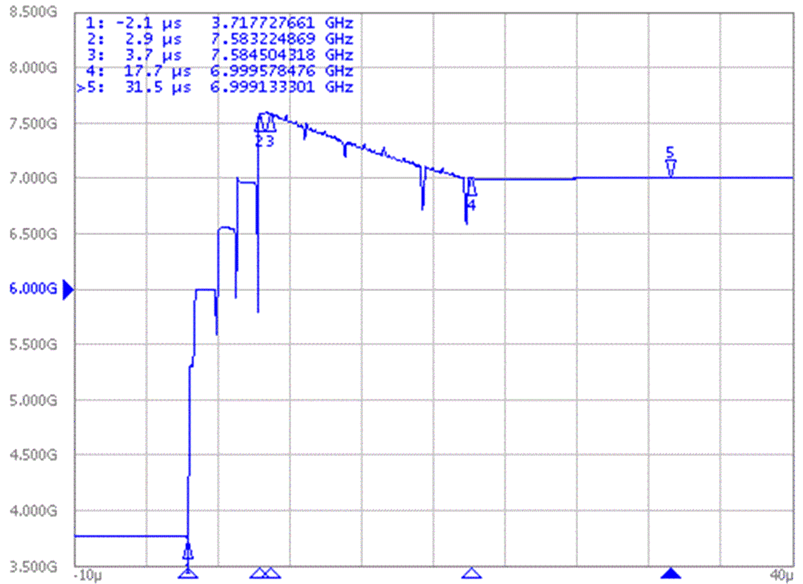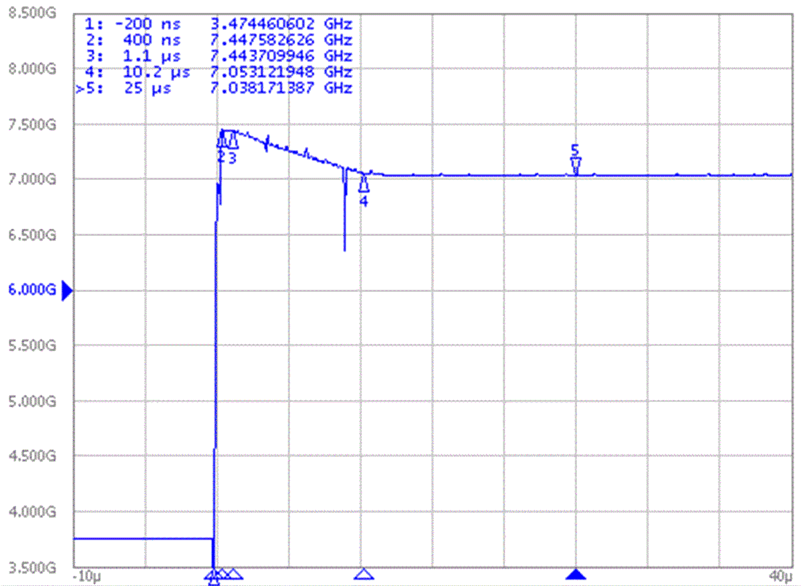SNAA342 September 2020 LMX2820
3.2 VCO Calibration Time
Another concern is the time that it takes the VCO to calibrate, which is dependent on the device and setup conditions. The VCO will start at some initial starting point and then the VCO calibration searches for the correct calibration values. The simplest approach is “no assist” calibration in which no effort is used to choose the initial starting point. This is demonstrated with the LMX2594 PLL calibration as Figure 3-1 shows.
 Figure 3-1 LMX2594 VCO Calibration With no
Assist.
Figure 3-1 LMX2594 VCO Calibration With no
Assist. The first step is for the VCO to choose the correct core, that we can see as several step responses that finish at marker 2 at 2.9 μs. After this, it slews through the CAPCODE values to find to the correct one, which is completed at marker 4. The amplitude calibration is where the correct DACISET value is chosen and after this happens, the final analog settling time is finished at marker 5.
A natural question when looking at Figure 3-1 is to wonder if there is a way to assist the VCO calibration with an initial guess to have the VCO start at a closer frequency. Indeed there is a way and this is known as partial assist. By giving an initial guess for VCO_CORE, VCO_CAPCODE, and VCO_DACISET, this improves the VCO calibration, even if the guess is slightly off. Figure 3-2 illustrates this.
 Figure 3-2 LMX2594 VCO Calibration With Partial
Assist.
Figure 3-2 LMX2594 VCO Calibration With Partial
Assist. Beyond simply giving the VCO an educated starting point, there is also Full Assist Calibration, which involves forcing the exact value. For this method, it requires the device to be locked to the frequency at a previous time and the calibration settings stored in an external memory. Then these values can be read in and forced. Although this does require this to be done for every device, the benefit of eliminating the calibration time is worth it for many. For devices such as the LMX2594 and LMX2820, these same settings can be used over the entire temperature range.